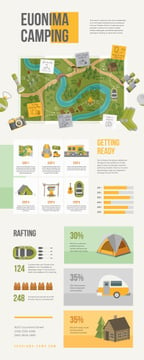If you're thinking of taking on the difficulty of wintertime camping, you need the right equipment to stay warm and comfy. Along with premium four-season camping tents like canvas wall outdoors tents from Sheltent, there are a couple of other points you can do to protect your camp.
Shielding your outdoor tents decreases fast body heat loss and stops hypothermia. Below are 7 effective methods to do it:
Flooring Insulation
The floor of a camping tent can easily end up being cool and uncomfortable, particularly in winter. You can safeguard on your own from this by laying a thick layer of insulated foam or sleeping pads on the ground. These are extremely light-weight and take up extremely little area, so they can easily be packed in your outdoor camping bag.
An additional good idea for an outdoor tents flooring is to use reflective mylar sheets, which will mirror temperature back inside the tent. But know that these sheets do not quit your body from losing heat via direct contact with the cold ground.
A tarp additionally provides a good degree of insulation for the camping tent flooring. Nonetheless, if you use one, make sure that it is not prolonging past the sides of your outdoor tents so that rain and snow do not pool below your camping tent. Likewise, take care not to overseal your outdoor tents, as this can cause too much humidity and condensation that can be tough to manage.
Wall surface Insulation
When a tent is shielded, it's less complicated for the occupants to maintain warmth. This assists with comfort, minimizes the possibility of cool air breach, and protects against condensation and mold.
Tent insulation can assist a camping trip go efficiently by preserving a cozy setting for rest and tasks. It additionally shields versus quick temperature loss, which leads to discomfort and prospective health dangers, such as hypothermia.
An outdoor tents can be shielded by including several different products to it. Some of these are effective in reducing conductive heat transfer, and include fiberglass insulation and cellulose insulation.
Some of these methods are much more useful than others, however any type of can considerably boost the convenience of your camping experience. For instance, laying a synthetic rug on the floor of your camping tent or using a heating carpet can be a very easy means to protect it against the chilly ground. Additionally, you could use a sheathing and insulation panel (SIP) made of foam board and oriented hair board.
Roofing Insulation
Purchase a four-season camping tent developed to stand up to snow, ice and cold wind. They'll stand up to warm transfer and keep cold air out better than traditional outdoors tents.
Locate a location to pitch your tent where there are natural obstacles to the wind, such as trees or bushes. Additionally, build a windbreak wall surface utilizing rocks and even snow, leaving ventilation voids.
Utilize a reflective liner in your tent to mirror the sunlight's rays away from the outdoor tents, minimizing the amount of heat it soaks up. This basic technique will make a massive distinction in your camping tent's comfort.
Consider a selection of insulation products, from cost effective blanket insulation to foam spray and SIPs. Each has its own benefits, yet factors like budget plan restraints, simplicity of installation, and dampness resistance must all be evaluated thoroughly. Insulation contractors can assist you review your alternatives and pick the very best suitable for your job.
Impact
The floor of your tent can obtain cold and wet, so protecting it is essential. There are a variety of methods to do this, including making use of tent impacts and heating floor coverings. Footprints are essential outdoor camping accessories that secure the floor of your tent from dampness damages and abrasion, substantially extending its life expectancy and improving your general outdoor camping experience.
Tent impacts differ from ground tarpaulins because they're especially customized to a particular outdoor tents design, including accessory points or grommets that straighten with tent edges and risks for protected accessory. They're also generally made from durable products such as polyethylene (PE), nylon, silnylon, or Dyneema for durable use and maximum protection.
When picking a camping tent footprint, pick one that carefully matches your tent's measurements and is sized somewhat smaller to stop water from merging below the camping tent when it rains. When staking down your outdoor tents, put any type of excess footprint product under the base camp outdoor tents to prevent wetness from getting in with the void.
